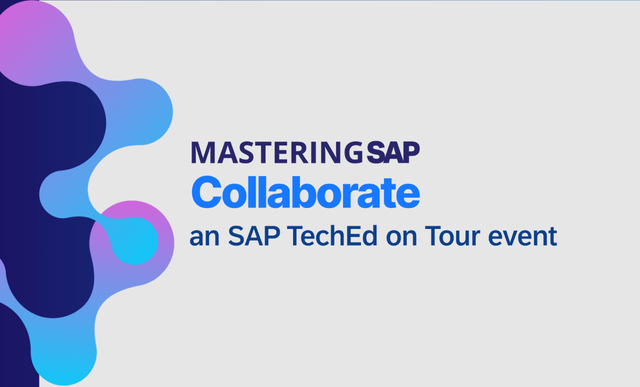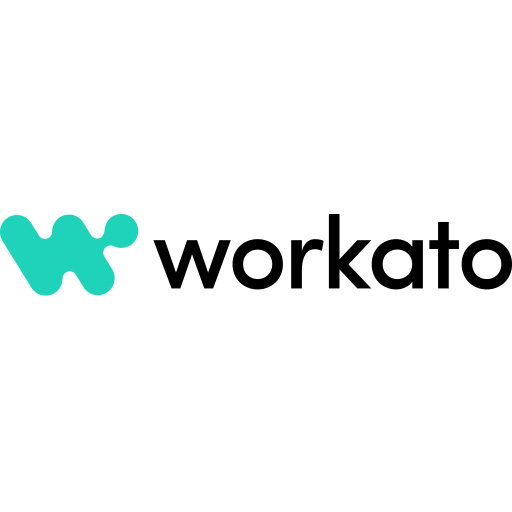SAP Applicant Tracking
Filter By
Browse By
- SAP Analytics and AI
- SAP Application Development and Integration
- All SAP Application Development and Integration
- SAP ABAP
- SAP ABAP Development Tools
- SAP ABAP Test Cockpit
- SAP API Management
- SAP BAPI
- SAP Basis
- SAP BRF
- SAP Business Application Studio
- SAP CMS
- SAP Design Studio
- SAP Development Tools
- SAP DevOps
- SAP EAI
- SAP EDI
- SAP Extension Suite
- SAP Fiori
- SAP Fiori Elements
- SAP Integration Suite
- SAP Low Code Application Development
- SAP Low Code Automation
- SAP Netweaver
- SAP Release Management
- SAP UI5
- SAP Web Application Server
- SAP Web IDE
- SAP Business Process Management
- SAP Center of Excellence
- SAP CIO
- SAP Customer Experience
- SAP Data and Data Management
- All SAP Data and Data Management
- SAP BW
- SAP BW/4HANA
- SAP Crystal Reports
- SAP Data Archiving
- SAP Data Center
- SAP Data Governance
- SAP Data Integration
- SAP Data Migration
- SAP Data Quality
- SAP Data Services
- SAP Data Strategy
- SAP Data Visualization
- SAP Data Warehouse Cloud
- SAP DMS
- SAP Document Control
- SAP EIM
- SAP ETL
- SAP ETL Tools
- SAP HANA
- SAP HANA Administration
- SAP HANA Deployment Infrastructure
- SAP HANA Studio
- SAP Master Data
- SAP Master Data Governance
- SAP MDM
- SAP Enterprise Architect
- SAP Enterprise Asset Management
- SAP ERP
- SAP Finance
- All SAP Finance
- SAP Accounting
- SAP AR AP
- SAP Asset Accounting
- SAP Billing Systems
- SAP BPC
- SAP BRIM
- SAP Cash Management
- SAP Central Finance
- SAP Controlling
- SAP COPA
- SAP Cost Center Accounting
- SAP Currency Risk
- SAP e-invoicing
- SAP FICO
- SAP Finance Automation
- SAP Advanced Financial Closing
- SAP Financial Consolidation
- SAP Financial Planning
- SAP FX Risk
- SAP General Ledger
- SAP Global Tax Management
- SAP Hyperion
- SAP Order to Cash
- SAP Payment Processing
- SAP Profitability Analysis
- SAP Rebate Management
- SAP S/4HANA Finance
- SAP SWIFT Compliance
- SAP Treasury Management
- SAP Universal Journal
- SAP Governance Risk and Compliance
- SAP Human Capital Management
- SAP Intelligent Technologies
- SAP Platform and Technology
- All SAP Platform and Technology
- SAP Business Technology Platform
- SAP Cloud
- SAP Cloud Connector
- SAP Cloud Integration Platform
- SAP Cloud Migration
- SAP Cloud Platform
- SAP Cloud Providers
- SAP Cloud Strategy
- SAP Digital Signature
- SAP Container Platform
- SAP HANA Enterprise Cloud
- SAP Digital Asset Management
- SAP Smart Forms
- SAP HEC
- SAP Digital Integration Hub
- SAP Hyperscalers
- SAP Infrastructure
- SAP Messaging
- SAP Quality and Testing
- SAP Security
- SAP Spend Management
- SAP Supply Chain Management
- All SAP Supply Chain Management
- SAP APO
- SAP Asset Management
- SAP Business Network
- SAP Digital Manufacturing Cloud
- SAP Digital Twin
- SAP EWM
- SAP IBP
- SAP Inventory Management
- SAP Label Printing
- SAP Logistics
- SAP Manufacturing
- SAP Manufacturing Automation
- SAP MES
- SAP MII
- SAP MM
- SAP MRO
- SAP MRP
- SAP Order Management
- SAP Plant Maintenance
- SAP PLM
- SAP Production Planning
- SAP S&OP
- SAP SD
- SAP SPM
- SAP Supply Chain Planning
- SAP Track and Trace
- SAP Transportation Management
- SAP System Administration
What is SAP Applicant Tracking?
The recruiting process generates a lot of information for recruiters to handle — from resumes to candidate data and more. Applicant tracking systems (ATS) are popular for corralling that information and linking it to important HR systems. SAP applicant tracking can be handled within the SAP SuccessFactors Recruiting module, but there are many ATS options and complementary tools out there.
What is SAP Applicant Tracking?
The recruiting process generates a lot of information for recruiters to handle — from resumes to candidate data and more. Applicant tracking systems (ATS) are popular for corralling that information and linking it to important HR systems. SAP applicant tracking can be handled within the SAP SuccessFactors Recruiting module, but there are many ATS options and complementary tools out there.
ATS often serve as systems of record for the job posting and application process and enable digital management of the documents and data generated along the way. Applicant tracking involves many recruiting functions depending on the product, such as:
- Job description posting
- Career pages and job boards
- Automated resume screening to find best candidate matches
- Resume storage
- Interview scheduling
- Application sorting
- Analytics
- Automated e-mails and offer letters
- Candidate sourcing
There are a wide variety of solutions in the market that offer ATS capabilities. Eightfold uses AI to match clients and automate talent acquisition processes. Phenom aims to create more applicant-friendly candidate relationship management to complement ATS. Docusign integrates with ATS to provide document management. System integrators like Deloitte and Accenture can help with best practices around implementing ATS.
Effective SAP applicant tracking with ATS should cut down on the time recruiting professionals spend reading resumes and sending emails and enable best practices around handling the personal data of applicants.
Key Considerations for SAPinsiders:
- ATS is a standard for large organizations. With the rise of cloud-based HR tools, even small to medium-size businesses are implementing ATS. With those systems in place and an applicant-friendly job market creating hiring challenges, companies are going even farther with deeper analytics and more candidate-focused experiences. If your company is still using traditional ATS, you may want to look at other measures to stay competitive for top talent.
- Automate aspects of the recruiting process with ATS and similar systems. For example, automating interview scheduling saves recruiters an average of multiple hours per day, according to Cliff Jurkiewicz, VP of Global Strategy at Phenom. This frees up recruiters to spend more time establishing relationships with candidates.
- Don’t underestimate the importance of first impressions in the overall employee experience. If you have a smoother applicant tracking and recruiting process, that will reflect well on your organization and be more appealing to candidates.
565 results
-

 Premium
Premium
SAP BusinessObjects Planning and Consolidation: An Overview of How It Works with SAP NetWeaver BW
Reading time: 17 mins
Gain an understanding of what SAP BusinessObjects Planning and Consolidation is about and the heavy focus on making this a business-user-driven application. Learn about the two different products (the version for SAP NetWeaver and the version for the Microsoft platform) and the different releases of each one. In addition, find out about the various clients...…
-

 Premium
Premium
Create Unparalleled Analytical Applications with SAP NetWeaver BI, Visual Composer, and Macromedia Flex
Reading time: 14 mins
Discover how Visual Composer allows you to create analytical applications without programming knowledge. Key Concept Also known as actionable dashboards and often confused with scorecards, floorplans, or cockpits, analytical applications allow business users to perform strategic, business-related functions. Key features of this type of program include easy navigation, graphical displays, drill-down menus, targeted content and...…
-

 Premium
Premium
Understand the Data Model for Integration between SAP CRM and SAP Industry Specific Solution – Utilities
Reading time: 21 mins
Prevent data errors by learning how data is replicated between SAP CRM and SAP Industry Specific Solution – Utilities (IS-U), as well as the relationships between objects in each system. Learn several common replication errors between the two systems and how to avoid them. Key Concept The SAP CRM/SAP Industry Specific Solution – Utilities (IS-U)...…
-
-

 Premium
Premium
Assess and Prioritize for Optimal Resource Allocation with SAP xRPM
Reading time: 10 mins
Consider how portfolios, projects, and operations for IT, product development, and other areas are managed in your organization. Do they share resources? Are they aligned with current business objectives? What are the criteria used to fund projects? Learn how to use SAP xApp Resource and Portfolio Management (SAP xRPM) to answer those and similar questions....…
-

 Premium
Premium
Dealing with Israel? Understand How the Cashier System Works
Reading time: 29 mins
Leverage the country-specific functionality of your SAP system for efficient accounting and compliance with local laws and regulations. Key Concept It is not a common practice in most countries to receive post-dated (deferred) checks from customers. In Israel, however, this is a common business practice. The Israeli (IL) Country Version of SAP ERP provides a...…
-

 Premium
Premium
How to Select the Best Mobile SAP CRM Option for You
Reading time: 12 mins
/MobileSAP offers multiple mobile solutions for SAP CRM that you can enhance to meet your needs. Determine which option is best for your mobile team and find out the technical requirements for each. Key Concept To work with SAP CRM you must be online and connected to your company network with a PC or laptop....…
-

 Premium
Premium
How to Use SAP Global Batch Traceability to Meet Your Genealogy Reporting Requirements
Reading time: 5 mins
Tracking materials across the supply chain is becoming an important requirement in many industries to enable efficient recall in case of a problem, to prevent counterfeiting of materials, and to meet compliance and regulatory standards. This has become critical for industries such as pharmaceutical, tobacco, food, chemical, and automotive. SAP Global Batch Traceability (SAP GBT)...…
-
-

- SAP Accounting
 Premium
Premium
Track Intercompany Loans Using SAP’s Transaction Manager Module: Part 2
Reading time: 49 mins
Learn the configuration steps needed for the intercompany loans process outlined in the article “Track Intercompany Loans Using SAP’s Transaction Manager Module, Part 1.” The configuration is in line with the process described in part 1 of this article. Key Concept When companies reach a more complex size, they often need to implement financing processes...…
-

 Premium
Premium
Error Stack in SAP NetWeaver BI Provides Improved Data Load Error Handling
Reading time: 11 mins
SAP NetWeaver BI 7.0 introduces new functionality for error handling, such as the error Data Transfer Process and error stack. Find out how to use these new options. Key Concept SAP NetWeaver BI 7.0 contains a modified data staging and distribution process, called the Data Transfer Process, as a part of the extraction, transformation, and...…
-

 Premium
Premium
Implement a Compliant Identity Management Solution for Effective Provisioning, Reporting, and Role Management
Reading time: 16 mins
Learn how to achieve efficient, compliant, and secure management of user accounts and identities with SAP NetWeaver Identity Management (SAP NetWeaver IDM). Step through an overview of SAP NetWeaver IDM, including the product’s architecture and integration capabilities. Key Concept SAP NetWeaver Identity Management (SAP NetWeaver IDM) provides provisioning capabilities for SAP and third-party applications. You...…
Become a Member
Unlimited access to thousands of resources for SAP-specific expertise that can only be found here.
Become a Partner
Access exclusive SAP insights, expert marketing strategies, and high-value services including research reports, webinars, and buyers' guides, all designed to boost your campaign ROI by up to 50% within the SAP ecosystem.
Upcoming Events
-

Mastering SAP Collaborate, an SAP TechEd on Tour event
November 12 - 14, 2025
Sydney, New South Wales
Australia
View Event
Related Vendors
Your request has been successfully sent

